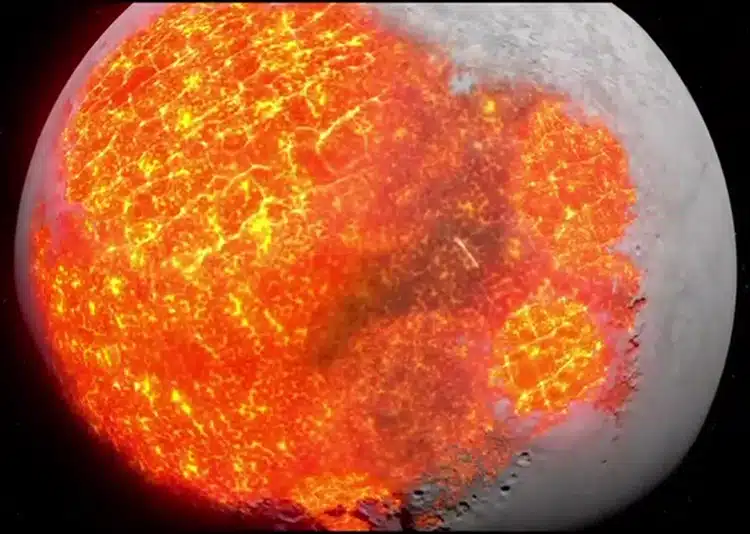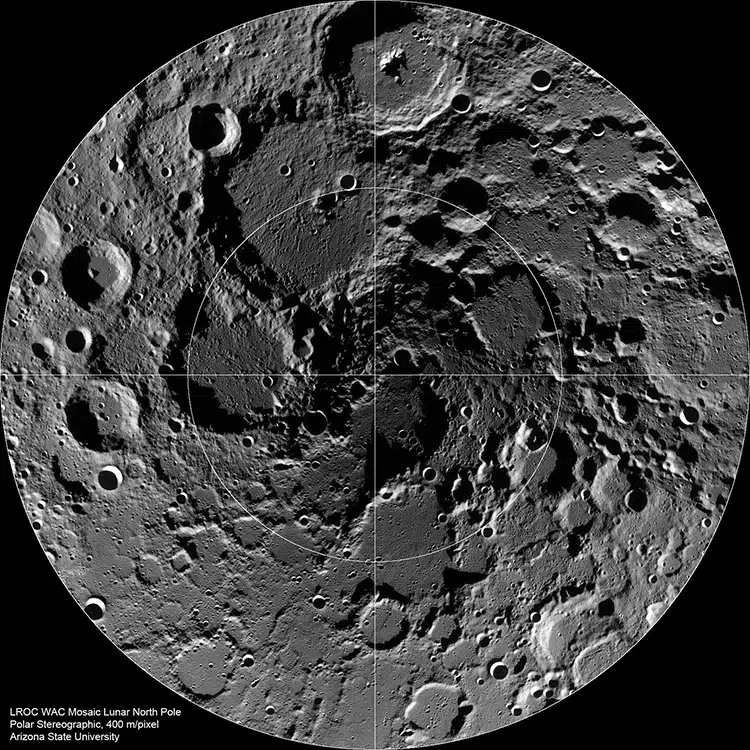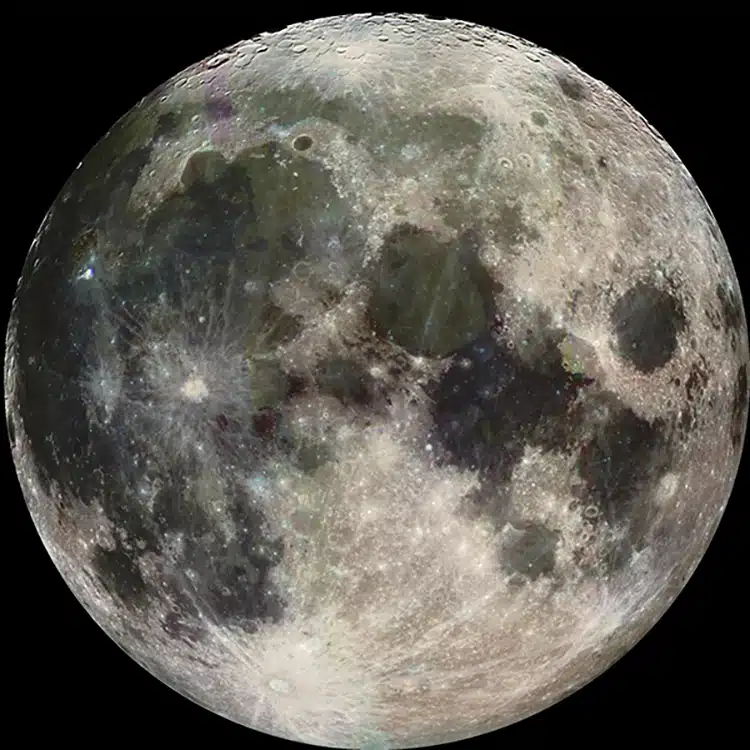
A visualization of what the magma ocean may have looked like. (Photo: NASA/Goddard Space Flight Center/Conceptual Image Lab)
The Moon is our planet’s loyal companion, orbiting Earth every 27 days. Although over 200,000 miles from Earth, it is our closest celestial neighbor. It clocks in at one-quarter Earth’s size, and its history is deeply entwined with its larger companion. Scientists believe the Moon was created when a protoplanet impacted the early Earth, breaking off a large chunk of matter, and eventually formed a new body. This new body became the Moon we know through a cooling process over millions of years. During that time, scientists have long believed the surface was covered in an ocean of magma. New evidence from lunar samples supports this theory, as announced in Nature.
As the debris of the impact 4.5 million years ago gathered into the beginnings of our Moon, the excess heat generated by impact melted the rock. Thus, a lunar magma ocean formed. Lighter rocks rose while heavier materials sank. Over the course of 200 million years the molten rock solidified into the rock surface seen today. However, the story is not so simple—as revealed by minerals in a sample taken by a rover from India’s Chandrayaan-3 space mission.
The lunar soil, known as regolith, was taken from near the Moon’s South Pole. “The high latitude regions . . . have undergone higher impact cratering due to their older age,” notes paper author Santosh Vadawale, while speaking to Popular Science. “This makes it challenging to identify safe landing zones of sufficient size, which probably was why most [early] landings took place in relatively safe Mare regions. However, the importance of landing closer to the poles has been known for quite a while, and . . . the number of attempts for landing at high latitudes has been increasing.”
This unique sample showed high levels of ferroan anorthosite, a light rock. Vadawale adds, “A key prediction of the lunar magma ocean hypothesis is the presence of a largely anorthositic crust.”
This finding supports the magma ocean theory of the Moon’s history. It matches findings on other, more studied regions of the Moon. Interestingly, however, the lunar “soil” presented heavier magnesium-filled rocks, despite the fact they likely sank in the magma. The researchers speculate impacts from asteroids may have flung these minerals up from lower depths. While there are still questions to be answered, the successful sampling of polar material, which supports the lunar magma ocean, is an exciting step towards tracing the history of the Moon.
The Moon was likely once covered by a magma ocean, which eventually cooled to rock.

The surface of the moon’s North Pole. (Photo: JPL/ASU/NASA)
New findings from a lunar rover support this theory of the Moon’s formation.

Photo: JPL/NASA
Learn more about the evolution of the Moon.
h/t: [Smithsonian Magazine, Popular Science, Space.com]
Related Articles:
Colorful Infographics Explore the Mysterious World of Exoplanets
Scientists Discover Possible Ocean of Water Beneath Mars’ Surface
Upcoming Perseid Meteor Shower Will Be an Impressive Celestial Event
NASA Releases Stunning New Photographs to Celebrate Chandra Space Telescope’s 25th Anniversary
